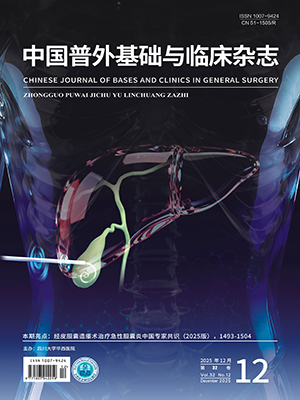| 1. |
Andersen LW, Kim WY, Chase M, et al. The prevalence and significance of abnormal vital signs prior to in-hospital cardiac arrest. Resuscitation, 2016, 98: 112-117.
|
| 2. |
Cherry PG, Jones CP. Attitudes of nursing staff towards a modified early warning system. Br J Nurs, 2015, 24(16): 812-818.
|
| 3. |
Nightgale-EU. Nightingale: Levels of sophistication in early warning. Available from: https://www.nightingale-h2020.eu/industry/presentations-our-omc-meetings.
|
| 4. |
Dursun Ergezen F, Kol E. Nurses’ responses to monitor alarms in an intensive care unit: An observational study. Intensive Crit Care Nurs, 2020, 59: 102845.
|
| 5. |
劉鳳春, 孟茜, 梁寶娟, 等. 應用“應力環”降低心電監護儀誤報警率的效果評價. 中國實用護理雜志, 2020, 36(17): 1319-1322.
|
| 6. |
王娜, 李龍倜, 徐圣康, 等. 重癥監護室護士醫療設備報警疲勞的現狀及其影響因素分析. 現代臨床護理, 2018, 17(12): 11-16.
|
| 7. |
Nix M. Combating alarm fatigue. Am J Nur, 2015, 115(2): 16.
|
| 8. |
ECRI. Top 10 technology health hazards for 2020: Solutions Kit. 2019-10-29. https://www.ecri.org/search-results/member-preview/hdjournal/pages/2020_top_10_hazards/.
|
| 9. |
Arnold J, Davis A, Fischhoff B, et al. Comparing the predictive ability of a commercial artificial intelligence early warning system with physician judgement for clinical deterioration in hospitalised general internal medicine patients: a prospective observational study. BMJ Open, 2019, 9(10): e032187.
|
| 10. |
Uppanisakorn S, Bhurayanontachai R, Boonyarat J, et al. National Early Warning Score (NEWS) at ICU discharge can predict early clinical deterioration after ICU transfer. J Crit Care, 2018, 43: 225-229.
|
| 11. |
Bian Y, Xu F, Lv RJ, et al. An early warning scoring system for the prevention of acute heart failure. Int J Cardiol, 2015, 183: 111-116.
|
| 12. |
李紅, 吳婷婷, 穆艷. 急性冠狀動脈綜合征患者心搏驟停前24 h早期預警評分變化趨勢的研究. 中華護理雜志, 2019, 54(1): 14-18.
|
| 13. |
Alam N, Hobbelink EL, van Tienhoven AJ, et al. The impact of the use of the Early Warning Score (EWS) on patient outcomes: a systematic review. Resuscitation, 2014, 85(5): 587-594.
|
| 14. |
Kolic I, Crane S, McCartney S, et al. Factors affecting response to National Early Warning Score (NEWS). Resuscitation, 2015, 90: 85-90.
|
| 15. |
林少虹, 林月雙, 李春容, 等. MEWS病情自動預警系統的開發與應用. 護理學報, 2019, 26(16): 76-78.
|
| 16. |
Zimlichman E, Szyper-Kravitz M, Shinar Z, et al. Early recognition of acutely deteriorating patients in non-intensive care units: assessment of an innovative monitoring technology. J Hosp Med, 2012, 7(8): 628-633.
|
| 17. |
Churpek MM, Adhikari R, Edelson DP. The value of vital sign trends for detecting clinical deterioration on the wards. Resuscitation, 2016, 102: 1-5.
|
| 18. |
Dezman ZD, Hu E, Hu PF, et al. Computer modelling using prehospital vitals predicts transfusion and mortality. Prehosp Emerg Care, 2016, 20(5): 609-614.
|
| 19. |
Elvekjaer M, Aasvang EK, Olsen RM, et al. Physiological abnormalities in patients admitted with acute exacerbation of COPD: an observational study with continuous monitoring. J Clin Monit Comput, 2020, 34(5): 1051-1060.
|
| 20. |
Bleyer AJ, Vidya S, Russell GB, et al. Longitudinal analysis of one million vital signs in patients in an academic medical center. Resuscitation, 2011, 82(11): 1387-1392.
|
| 21. |
Churpek MM, Yuen TC, Winslow C, et al. Multicenter development and validation of a risk stratification tool for ward patients. Am J Respir Crit Care Med, 2014, 190(6): 649-655.
|
| 22. |
劉藝聰, 張婷婷, 張紫君, 等. 標準化護理語言在電子健康記錄中的應用現狀. 中國實用護理雜志, 2019, 35(9): 717-721.
|
| 23. |
Al-Jaghbeer M, Dealmeida D, Bilderback A, et al. Clinical decision support for in-hospital AKI. J Am Soc Nephrol, 2018, 29(2): 654-660.
|
| 24. |
Taylor RA, Pare JR, Venkatesh AK, et al. Prediction of in-hospital mortality in emergency department patients with sepsis: a local big data-driven, machine learning approach. Acad Emerg Med, 2016, 23(3): 269-278.
|
| 25. |
Ong ME, Lee Ng CH, Goh K, et al. Prediction of cardiac arrest in critically ill patients presenting to the emergency department using a machine learning score incorporating heart rate variability compared with the modified early warning score. Crit Care, 2012, 16(3): R108.
|
| 26. |
Dziadzko MA, Novotny PJ, Sloan J, et al. Multicenter derivation and validation of an early warning score for acute respiratory failure or death in the hospital. Crit Care, 2018, 22(1): 286.
|
| 27. |
嚴律南, 楊家印. 人工智能肝癌臨床決策支持系統的開放、驗證和應用價值. 中國普外基礎與臨床雜志, 2020, 27(9): 1052-1056.
|
| 28. |
劉志華, 曹曉均, 李慶豐, 等. 基于電子病歷應用模型標準的醫院信息化建設實踐. 中國醫療設備, 2017, 32(6): 148-151.
|
| 29. |
Castillo RS, Kelemen A. Considerations for a successful clinical decision support system. Comput Inform Nurs, 2013, 31(7): 319-326.
|
| 30. |
洪建, 張潔, 陶敏, 等. 新型臨床決策支持系統在智慧醫院建設中的應用研究. 中國數字醫學, 2019, 14(9): 22-24.
|
| 31. |
林深, 鄭哲. 分析面部圖片預測冠心病:人工智能開啟疾病篩查新時代. 中國胸心血管外科臨床雜志, 2020, 27(11): 1262-1264.
|
| 32. |
李芊, 周逸菲, 李崢艷, 等. 基于CT的直腸癌新輔助化療后病理完全緩解預測模型的初步探索—DACCA數據庫的聯合研究. 中國普外基礎與臨床雜志, 2020, 27(5): 606-611.
|
| 33. |
Nemati S, Holder A, Razmi F, et al. An interpretable machine learning model for accurate prediction of sepsis in the ICU. Crit Care Med, 2018, 46(4): 547-553.
|
| 34. |
胥婷, 崔文彬, 于廣軍. 我國智慧醫院建設現狀及發展路徑. 中國醫院, 2020, 24(3): 1-3.
|
| 35. |
王修來, 曹陽. 移動數字醫院研究. 北京: 中國人事出版社, 2016: 203-213.
|
| 36. |
Yao Q, Wang M, Chen Y, et al. Taking human out of learning applications: a survey on automated machine learning. arXiv: 1810.13306v4[cs.AI] 16 Dec 2019. https://arxiv.org/pdf/1810.13306.pdf.
|
| 37. |
Waring J, Lindvall C, Umeton R. Automated machine learning: review of the state-of-the-art and opportunities for healthcare. Artif Intell Med, 2020, 104: 101822.
|
| 38. |
Alaa AM, Bolton T, Di Angelantonio E, et al. Cardiovascular disease risk prediction using automated machine learning: A prospective study of 423 604 UK Biobank participants. PLoS One, 2019, 14(5): e0213653.
|
| 39. |
Alaa AM, van der Schaar M. Prognostication and risk factors for cystic fibrosis via automated machine learning. Sci Rep, 2018, 8(1): 11242.
|
| 40. |
Luo G. MLBCD: a machine learning tool for big clinical data. Health Inf Sci Syst, 2015, 3: 3.
|
| 41. |
Luo G. PredicT-ML: a tool for automating machine learning model building with big clinical data. Health Inf Sci Syst, 2016, 4: 5.
|




